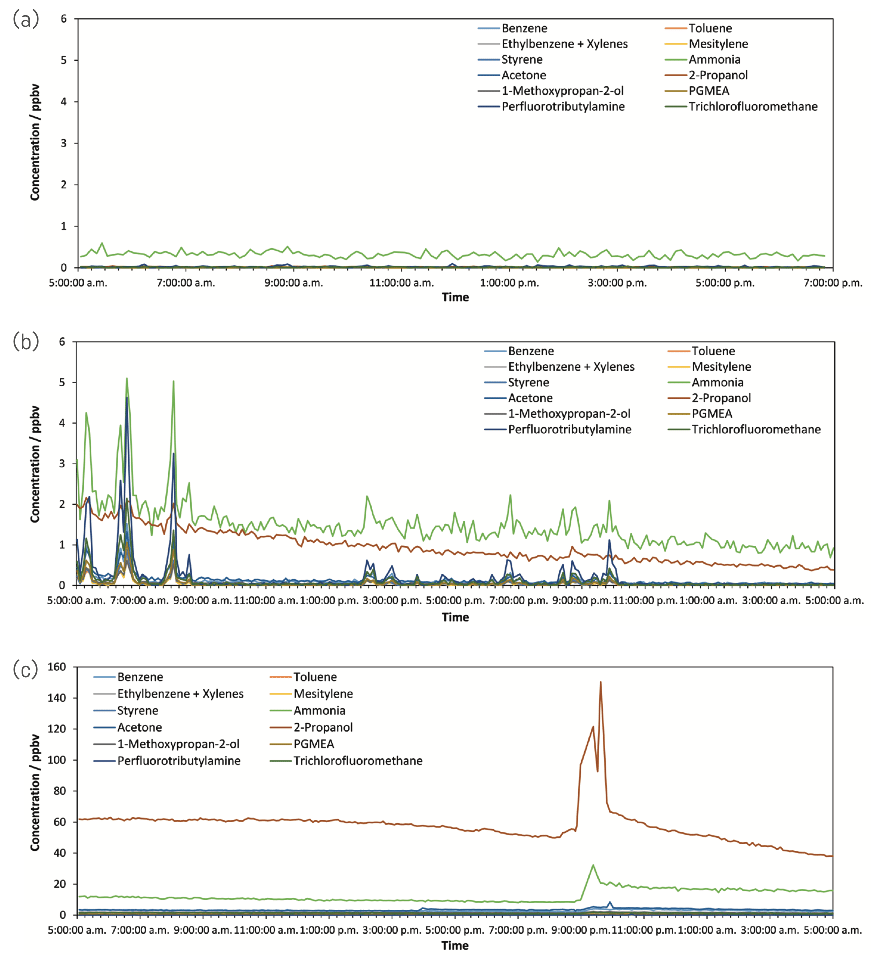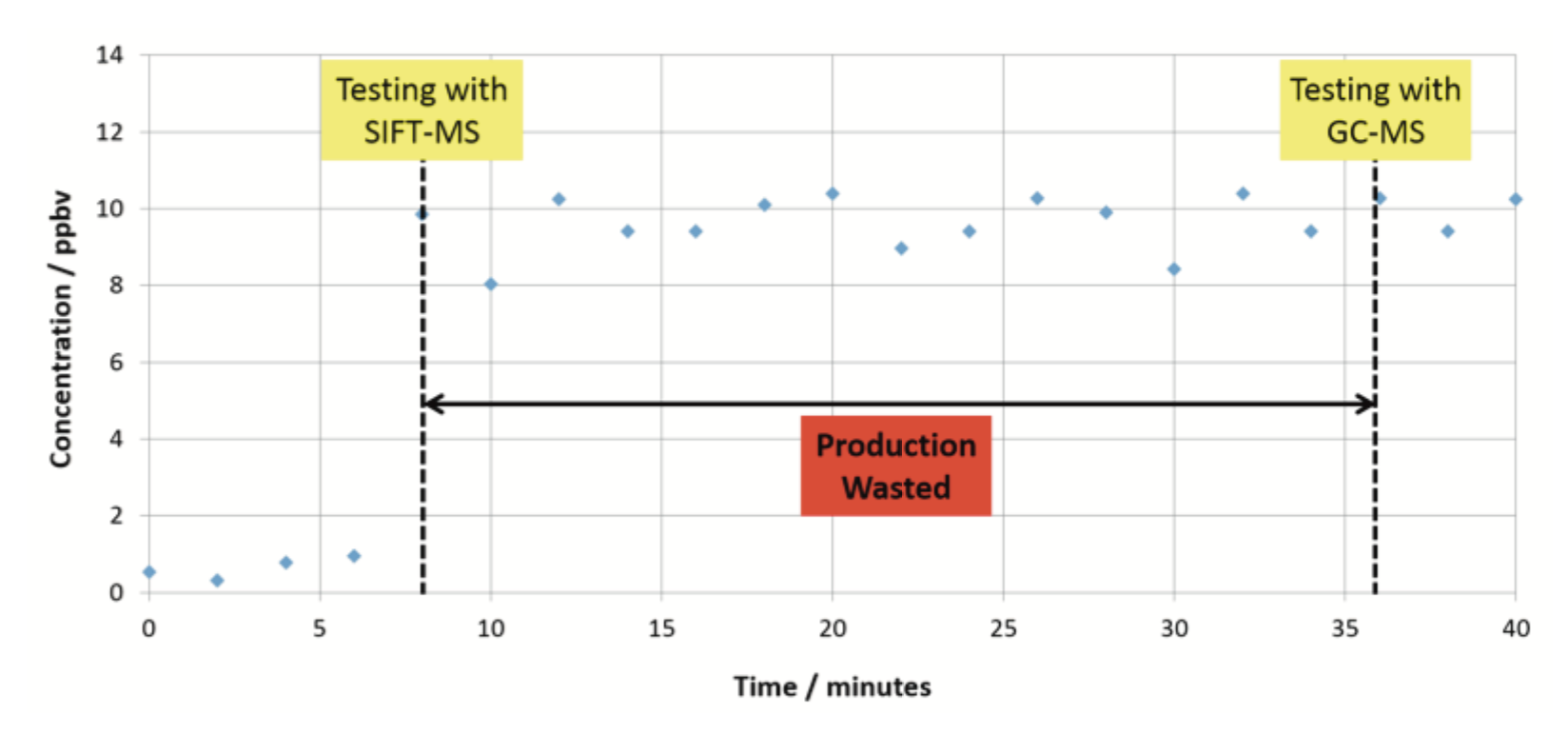Airborne molecular contamination refers to the damage caused by airborne molecular contaminants (AMCs) within the air. AMCs cause major product quality issues in modern semiconductor fabrication, even at very low levels (part-per-billion by volume, ppbV, and below). Currently, multiple tools are used to detect certain classes of AMCs, with varying degrees of effectiveness.
SIFT-MS is a unique analytical tool that provides comprehensive, high-sensitivity detection of volatile organic and semi-volatile organic compounds (VOCs and SVOCs), and inorganic gases (including HCl, HF, and SOx) within seconds. As a single, comprehensive tool providing rapid analysis, SIFT-MS yields great economic benefit because it detects and identifies issues faster, resulting in reduced product losses.

Figure 1 shows continuous monitoring data obtained for selected, chemically diverse AMCs at a semiconductor fab in Eastern China in early 2016. In Figure 1(a), the data show that sub-ppbV concentrations are readily detected using SIFT-MS, confirming that airborne molecular contamination (AMC) levels are such that product quality will not be compromised. Events such as frequent opening of doors to uncontrolled areas (Figure 1(b)) or cleaning (Figure 1(c)), can have drastic and sudden effects on air quality and subsequently on product quality and yield.
Cleanroom air quality can vary dramatically over short time-periods. Traditional time-averaged methods for analyzing cleanroom air result in delayed responses to these events or can miss them entirely. The high temporal resolution provided by SIFT-MS means that air quality issues are detected rapidly compared to traditional techniques (Figure 2), significantly reducing equipment damage and maintenance, and cutting production losses.
SIFT-MS instruments are also readily integrated into multiple-point sampling systems, enabling wider production coverage by one analytical tool. For example, more compounds can be analyzed twelve times as frequently at twice the number of locations, compared to thermal desorption-gas chromatography-mass spectrometry (TD-GC/MS).

Figure 2. Detect and address cleanroom air quality problems quickly by applying SIFT-MS.
Acknowledgment: We thank Roy Peng of Green River Tech. Co. Ltd., Taiwan R.O.C. for acquiring and sharing the data.
